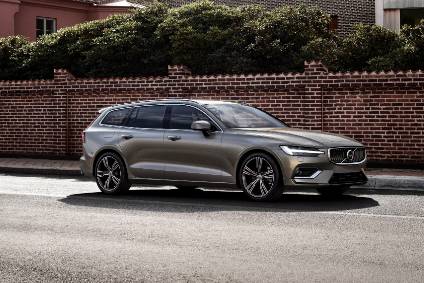This piece was initially prompted by the appearance of the new Volvo V60, to universal acclaim, which brought a wistful thought from me that it was a shame that Jaguar doesn't have a wagon version of its XE as a competitor. From the initial pictures the V60 appears to be a fantastic looking car with all the usual virtues that Volvo-ness brings to the estate (wagon) genre. It looks unmistakably like its V90 sibling or as colleague Glenn Brooks put it in the office last week, "Honey, I've shrunk the V90."
While my initial thoughts were wistful, an examination of the XE's performance in the market reveals thoughts along the lines, "Thank goodness that Jaguar has the F-Pace!".
Back in pre-production planning for the initial Jaguar variants of its D7a platform JLR had to make a decision between committing to including an XE-derived wagon in X760 plans or the X761 (now F-Pace) as available funds wouldn't stretch to both. Economics won the day. The thinking being that wagons contribute around 30-40% to premium D-segment volume and the modest – 50-70,000 per annum – volume plans for the XE saloon would not make tooling up for a wagon version worthwhile. Some quick digging into data from the German manufacturers' association, the VDA, reveals that over the 2014-2016 period average share of wagons in Audi A4, BMW 3-Series and Mercedes C-Class production stood at 46% for the Audi, 36% for the BMW and 42% for Mercedes, thus confirming thoughts around the likely share of any prospective XE wagon. Another contributory factor in not planning for an XE wagon was that the bodystyle doesn't sell so well in the US market.
Faced with such a stark choice the decision made at the time is understandable: the F-Pace was always destined to be a big seller. Retrospectively it's crazy that Jaguar took so long to embrace the SUV/crossover boom for fear of sullying the Jaguar brand.
Now, however, while the V60's arrival is making the decision look, on the one hand, less palatable, on the other it's a case of being careful what you wish for and thankful that the F-Pace was given the green light. A look at the sales data reveals the XE's troubles. In Europe, for 2017, the XE languished in 170th place, with some 19,000 units registered, surrounded by such salubrious company as the Kia Carens and Suzuki Baleno. By way of contrast, European sales for the A4 stood at 146,000, those for the 3-Series at 129,000 and the C-Class at a whopping 176,000. JLR reportedly built just under 30,000 XEs in 2017.
Maybe, if product planning had been looked at through a different lens, it could be argued that a 30-40% share of total build could have brought a 43-67% increment to volume (the maths works – trust me!), if one assumes that the sedan market and wagon market are two separate animals and there's little cannibalisation between sedan and wagon sales. Looking around the various automotive forums that certainly appears to hold true to an extent, with drivers valuing their additional practicality and sometimes even preferring the looks of an estate. Additionally it's clear that not everyone on the planet covets an SUV or crossover and there's a distinct lack of competition due to the mainstream D-segment erosion and some missteps by others. This has happened to the extent that there are probably only four competitors in the class, those being the German premiums and the Volvo V60. Ironically, this gives us the situation that product planners love – whitespace and spare squares on their portfolio planning chessboards – but with no commercial incentive to fill those spaces.
Unfortunately, in this day and age, those that do not wish for an SUV or crossover are the exception rather than the rule. This is backed up by some 73,000 F-Paces leaving Solihull's factory gates in 2017, following on from nearly 67k in 2016, the first full year of production, and Jaguar's first foray into the SUV market.
Clearly, at the time of D7a planning, it would have been commercial suicide not to do a Jaguar SUV. That decision paved the way for the E-Pace (with good reports from Mr Brooks on its capabilities to come after he attended its launch last week). Further down the line we'll get the rather lovely dolphin-nosed I-Pace all-electric crossover. Also, given that both the XF and XJ are struggling in the market in a similar manner to XE – their combined build out of Castle Bromwich was down over 41% in 2017 with just over 26,000 built – (with the XF rather wryly demonstrating that a wagon variant is never likely to be a panacea for market ills) the rumours of a Jaguar-badged SUV larger than the F-Pace will gather momentum. All this SUV activity at Jaguar leaves those involved in product planning at JLR treading a fine line between being guardians of the brand's sporting heritage and adapting to modern commercial realities.






